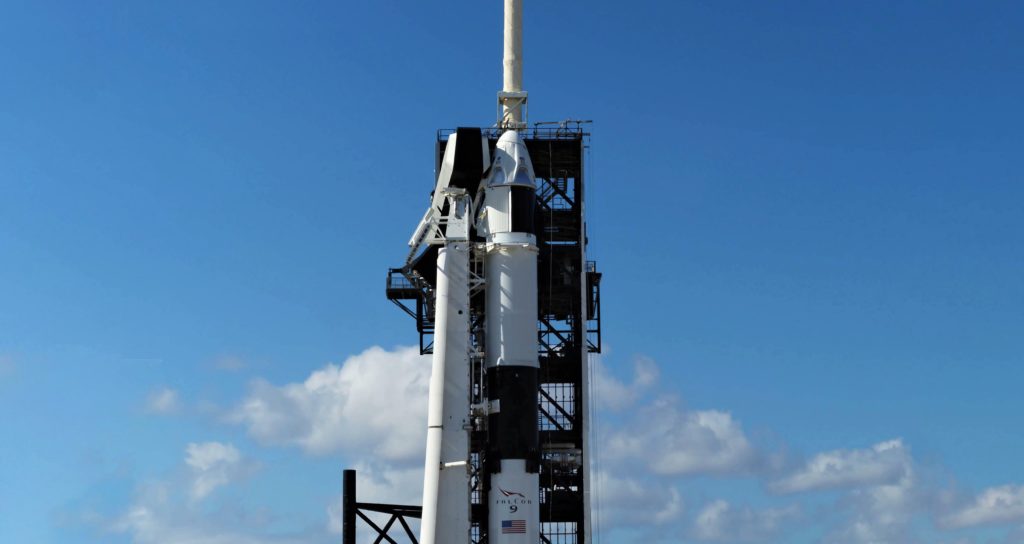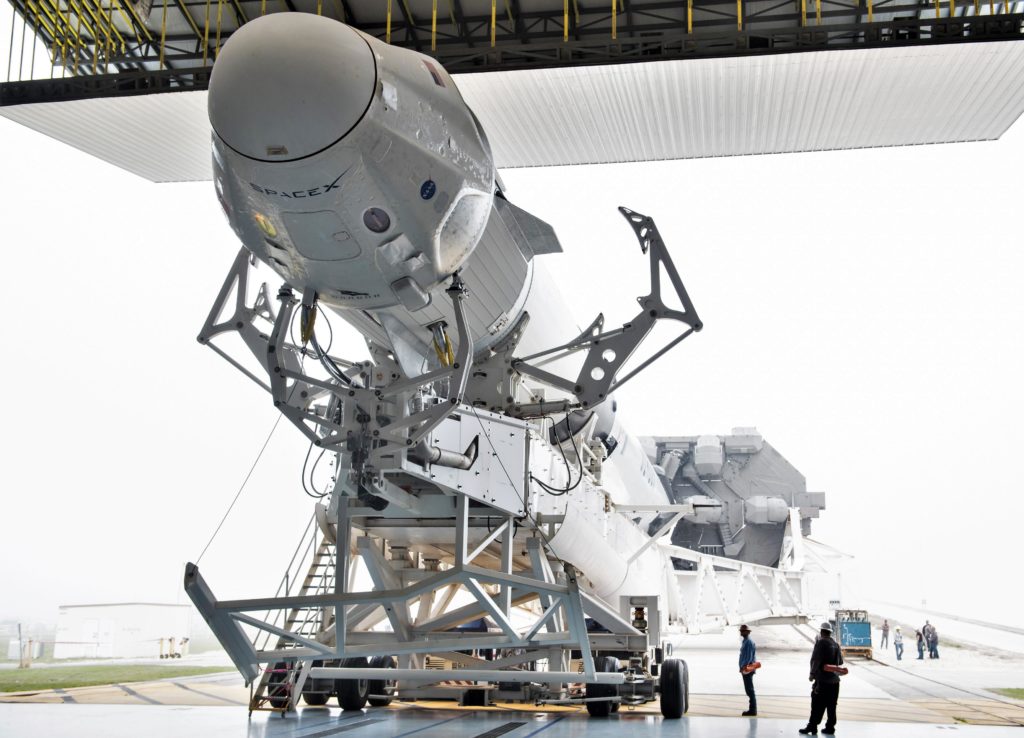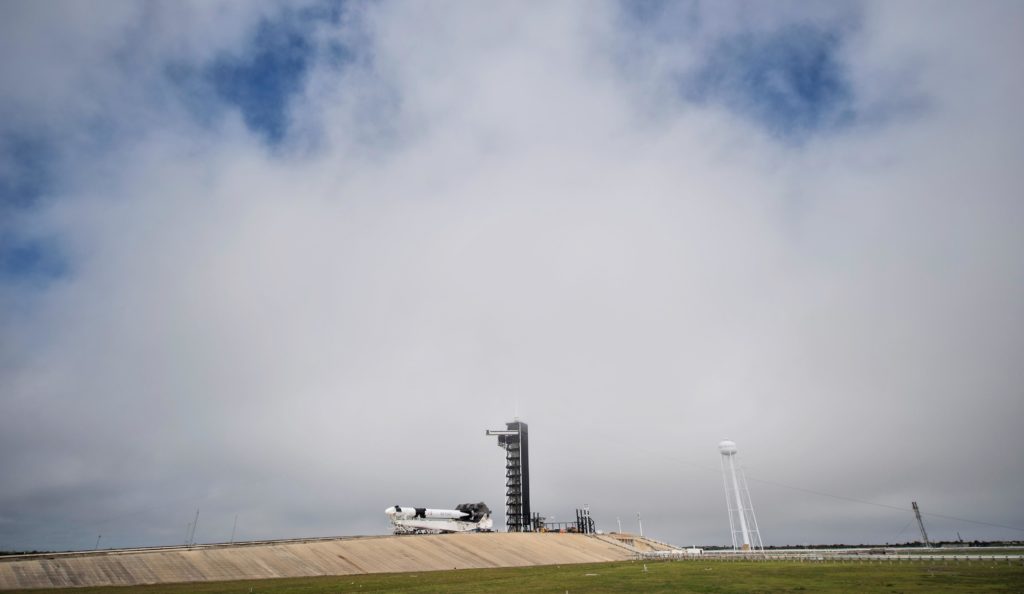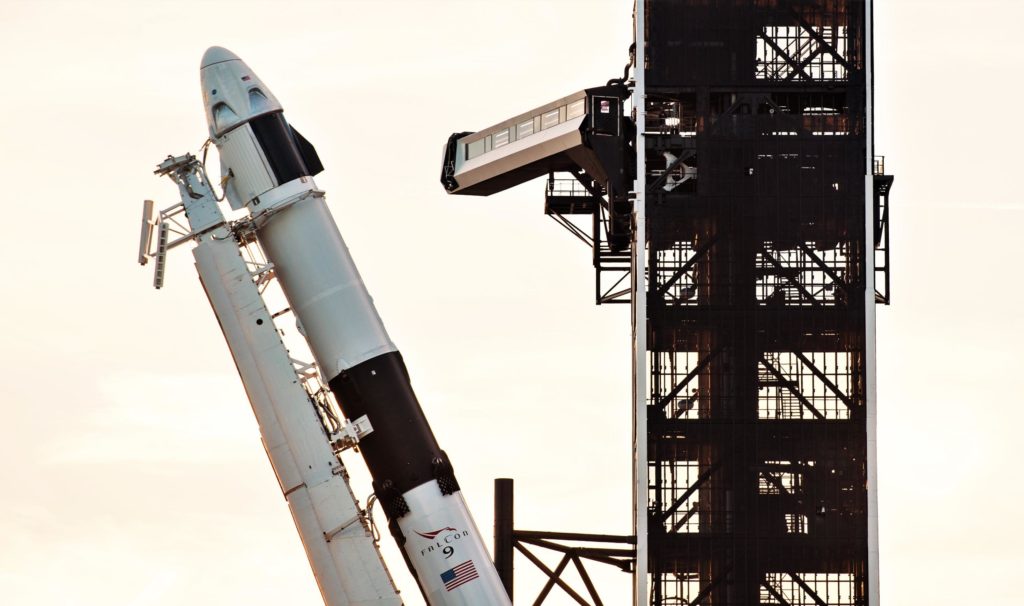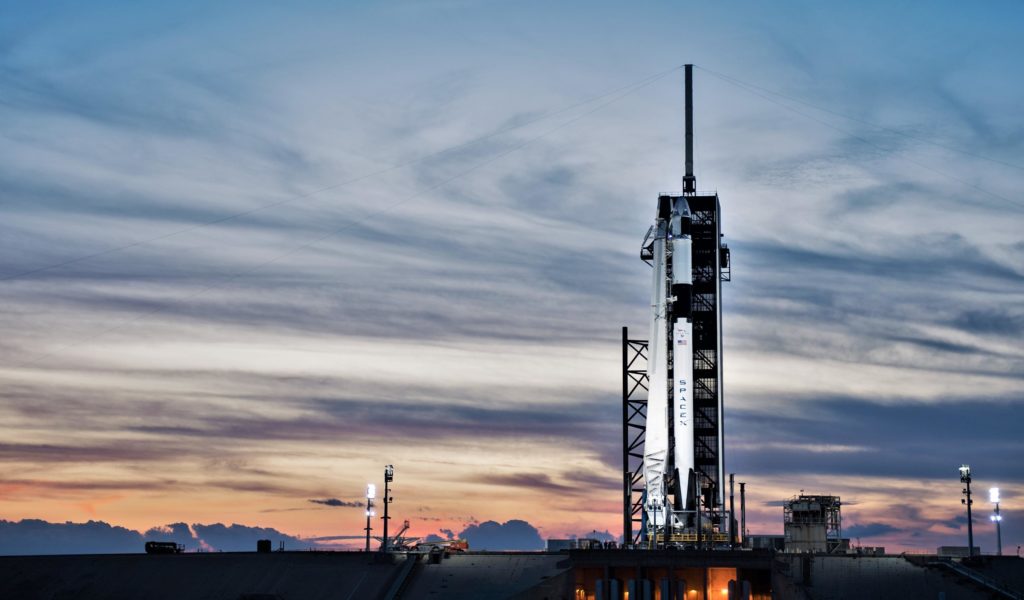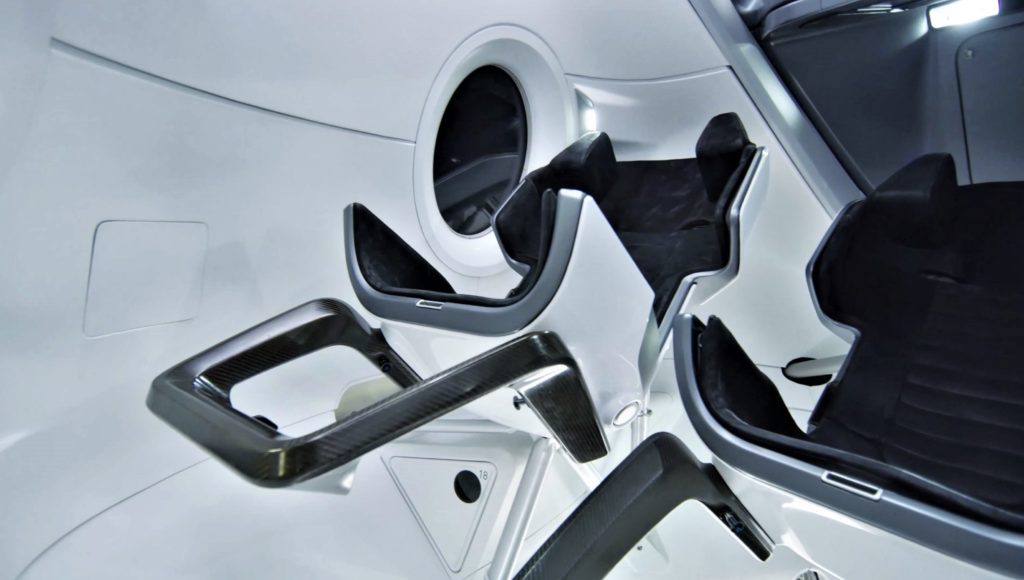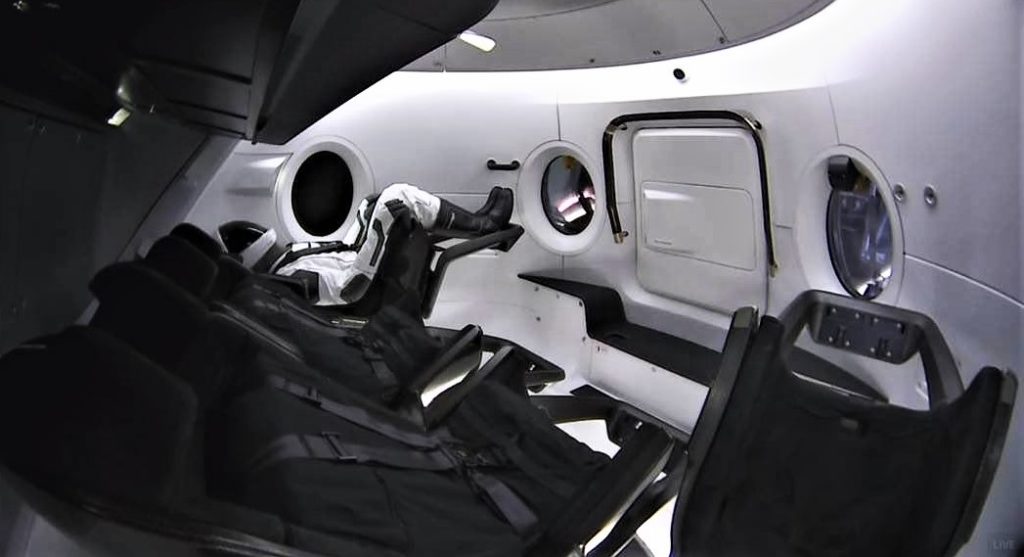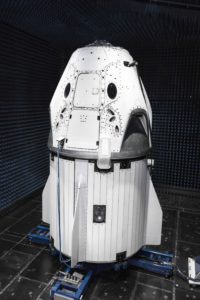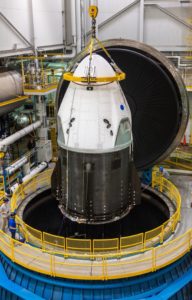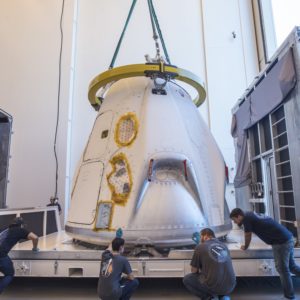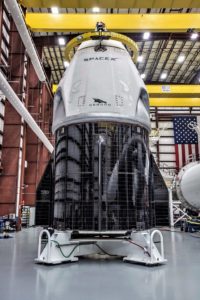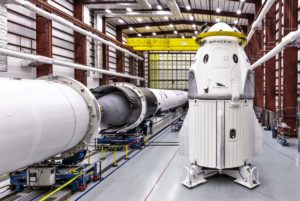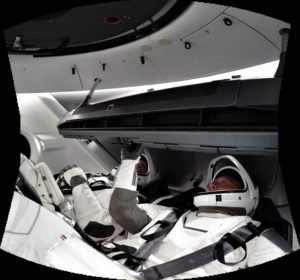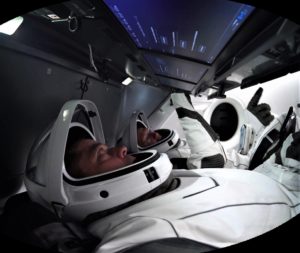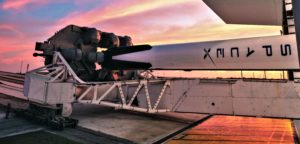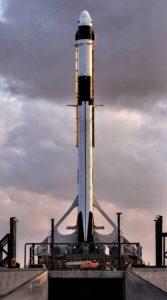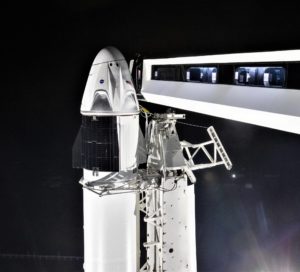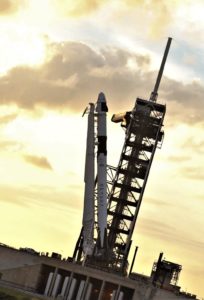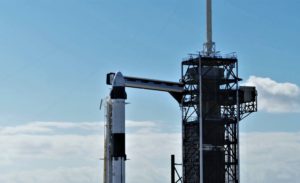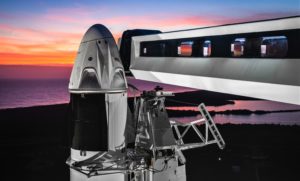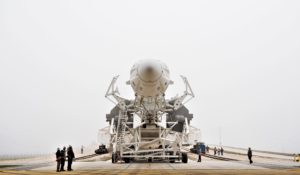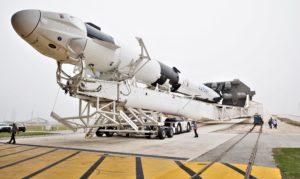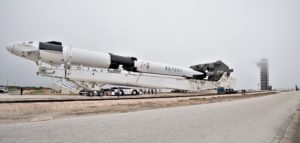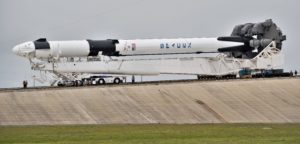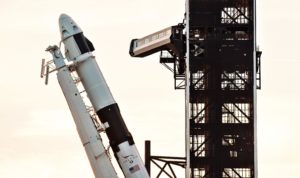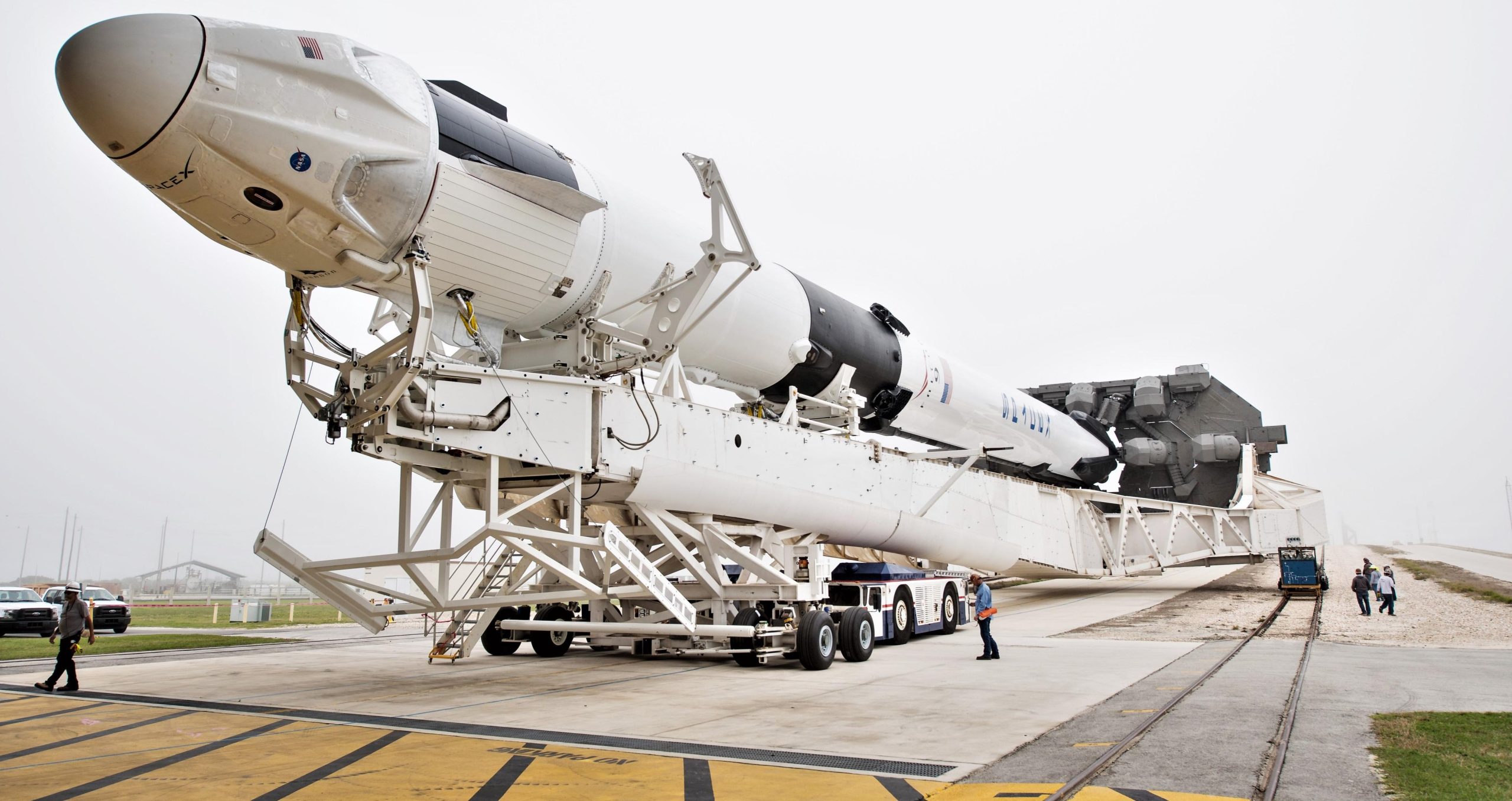
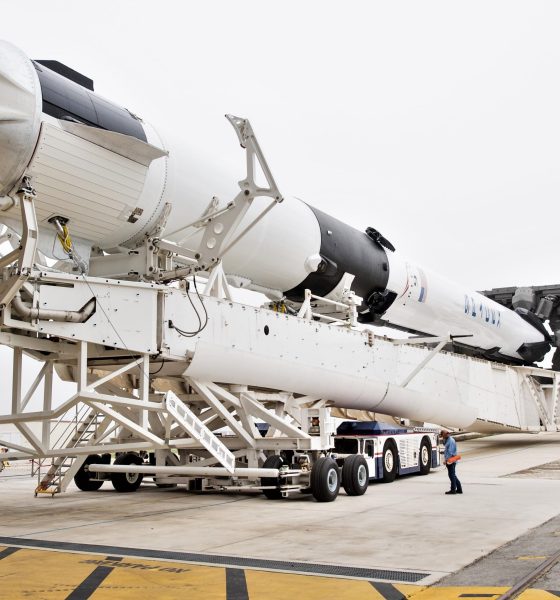
SpaceX
SpaceX’s space-bound Crew Dragon stars in spectacular preflight photos [gallery]
SpaceX and NASA are both participating in an exceptional media blitz on the verge of Crew Dragon’s orbital launch debut, sharing dozens of detailed photos and videos documenting the advanced spacecraft’s many years of development and its brief final voyage out to Launch Complex 39A (Pad 39A).
Scheduled to attempt its first launch at 2:48 am EST (07:48 UTC), March 2nd, CEO Elon Musk has already teased one significant part of a spectacular, hosted webcast SpaceX has prepared for the milestone launch, arguably the biggest step the company will have taken towards its foundational goal of “making humanity a multiplanetary species”. Riding along on the uncrewed demonstration mission will be a test dummy – Starwoman – known as Ripley, a close relative of the Starman character now orbiting the sun in deep space.
Crew Dragon and Falcon 9 rolled out to the launch pad ahead of the spacecraft’s first test flight. Liftoff targeted for 2:49 a.m. EST on March 2 pic.twitter.com/Dud93ZrkgH
— SpaceX (@SpaceX) February 28, 2019
Coming straight off of SpaceX’s February 21st Falcon 9 launch of commsat PSN-6 and Spaceflight’s GTO-1 rideshare, the contrast with the media presence behind Crew Dragon’s launch debut is stark. Regular SpaceX launches have grown into a routine distribution of official behind-the-scenes photos: one photo of Falcon 9 vertical on the pad after the rocket goes vertical, a hosted webcast with excellent live views of the mission, high-quality launch photos taken by SpaceX or contracted photographers, and – less frequently – a rare photo or two of the booster’s landing. NASA-led launches are a different story entirely, followed by USAF missions in a distant second place.
SpaceX and @NASA have completed thousands of hours of tests, analyses, and reviews in preparation for Crew Dragon’s first test flight to the @space_station pic.twitter.com/JvJqeoLKVy
— SpaceX (@SpaceX) February 28, 2019
Particularly so given that NASA has funded 99-100% of Crew Dragon’s costly development, SpaceX customers can typically reserve the right to request special views and even post photos of their own in launch or program contracts. As a civilian federal agency, NASA is largely obligated to share photos, insofar as they generally play nice with arms trafficking regulations like the US’ ITAR. For any number of reasons, SpaceX has become noticeably less keen on sharing photos of its milestones and more routine operations, regardless of whether or not a given subject is likely to raise the ire of ITAR.
While the company still shares far more than they technically have to (i.e. nothing), competitors like ULA tend to share far more even for extraordinarily security-conscious National Reconnaissance Office launches. Regardless of the company’s reasons, to which they have every right, the floodgates have been opened in the two or so months that have built up to Crew Dragon’s inaugural launch.
Ripley pic.twitter.com/Z9Ztram8Ai
— Elon Musk (@elonmusk) March 1, 2019
Combined, NASA and SpaceX have shared dozens of extremely high-quality photos of Falcon 9, Crew Dragon, and the general behind-the-scenes work required to make every launch (including this one) happen. SpaceX has also offered numerous rare glimpses into those processes, including rocket’s roll-out to Pad 39A and a brief 60-second overview featuring clips of much of the Crew Dragon development work that has been ongoing for 5+ years.
- Crew Dragon and Falcon 9 B1051 stand vertical at Pad 39A during preparations for a late January static fire test. (SpaceX)
- Crew Dragon and Falcon 9 B1051 stand vertical at Pad 39A during preparations for a late January static fire test. (SpaceX)
- Falcon 9 B1051 and Crew Dragon rolled out to Pad 39A on February 28th, roughly 60 hours before launch. (NASA)
- Falcon 9 B1051 and Crew Dragon rolled out to Pad 39A on February 28th, roughly 60 hours before launch. (NASA)
- A few hours later, Falcon 9 B1051 and Crew Dragon were lifted into the vertical position on SpaceX’s Transporter/Erector (T/E). (NASA)
- A SpaceX Falcon 9 rocket with the company’s Crew Dragon spacecraft onboard is seen after being raised into a vertical position on the launch pad at Launch Complex 39A as preparations continue for the Demo-1 mission, Feb. 28, 2019 at the Kennedy Space Center in Florida. The Demo-1 mission will be the first launch of a commercially built and operated American spacecraft and space system designed for humans as part of NASA’s Commercial Crew Program. The mission, currently targeted for a 2:49am launch on March 2, will serve as an end-to-end test of the system’s capabilities Photo Credit: (NASA/Joel Kowsky)
- A glimpse of Crew Dragon’s interior. (SpaceX)
- Starwoman – nicknamed Ripley – will be riding along on Crew Dragon’s debut launch. (SpaceX)
Onwards and upwards
Put simply, this mission may be the most important launch since SpaceX graduated from Falcon 1 to Falcon 9 almost nine years ago. Founded by Elon Musk with a single-minded purpose of creating cost-effective, reusable rockets that could allow or at least motivate humans to one day reach Mars, the pursuit of human spacecraft has been on the minds and agendas of Musk and SpaceX since the company’s 2002 formation. If Crew Dragon’s orbital debut is successful, SpaceX will have taken the biggest step yet in the direction of those lofty aspirations, thanks in large part to the funding and expertise bestowed upon the company through NASA’s Commercial Crew Program.
While SpaceX technically owns and operates it, Crew Dragon is a fundamentally NASA-owned vehicle with respect to fundamental capabilities and limitations baked into its design. The countless hundreds of thousands of hours of experience derived from developing Crew Dragon will, however, feed directly into Starship, a spacecraft that will very nearly be SpaceX’s and SpaceX’s alone, from a blank sheet of paper to Mars (fate permitting).
- The DM-1 Crew Dragon testing inside SpaceX’s anechoic chamber, May 2018. (SpaceX)
- SpaceX’s Demo Mission-1 Crew Dragon seen preparing for vacuum tests at a NASA-run facility, June 2018. (SpaceX)
- The first spaceworthy Crew Dragon capsule is already in Florida, preparing for its November 2018 launch debut. The same capsule will be refurbished and reflown as few as three months after recovery. (SpaceX)
- The first complete Crew Dragon is likely just days away from rolling out to Pad 39A atop Falcon 9. (SpaceX)
- An impressive view of Crew Dragon (DM-1), Falcon 9 B1051, and its upper stage. (SpaceX)
- DM-1 and Falcon 9 were greeted by an extraordinary – albeit mildly bittersweet – dawn during their first-ever trip out to Pad 39A. (SpaceX)
- Falcon 9 B1051 and Crew Dragon vertical at Pad 39A. (SpaceX)
- Crew Dragon shows off its conformal (i.e. curved) solar array while connected to SpaceX’s sleek Crew Access Arm (CAA). (SpaceX)
- Falcon 9 and Crew Dragon are raised vertical at Pad 39A ahead of a late January static fire test. (SpaceX)
- Crew Dragon and Falcon 9 B1051 stand vertical at Pad 39A during preparations for a late January static fire test. (SpaceX)
- Crew Dragon and Falcon 9 are ready for the spacecraft’s orbital launch debut, NET March 2nd. (SpaceX)
- SpaceX completed a successful static fire of the first Falcon 9 rated for human flight on January 24th. DM-1 is now NET March 2019. (SpaceX)
- Falcon 9 B1051 and Crew Dragon rolled out to Pad 39A on February 28th, roughly 60 hours before launch. (NASA)
- Falcon 9 B1051 and Crew Dragon rolled out to Pad 39A on February 28th, roughly 60 hours before launch. (NASA)
- Falcon 9 B1051 and Crew Dragon rolled out to Pad 39A on February 28th, roughly 60 hours before launch. (NASA)
- Falcon 9 B1051 and Crew Dragon rolled out to Pad 39A on February 28th, roughly 60 hours before launch. (NASA)
- Falcon 9 B1051 and Crew Dragon rollQDed out to Pad 39A on February 28th, roughly 60 hours before launch. (NASA)
- A few hours later, Falcon 9 B1051 and Crew Dragon were lifted into the vertical position on SpaceX’s Transporter/Erector (T/E). (NASA)
- A few hours later, Falcon 9 B1051 and Crew Dragon were lifted into the vertical position on SpaceX’s Transporter/Erector (T/E). (NASA)
- A few hours later, Falcon 9 B1051 and Crew Dragon were lifted into the vertical position on SpaceX’s Transporter/Erector (T/E). (NASA)
Check out Teslarati’s newsletters for prompt updates, on-the-ground perspectives, and unique glimpses of SpaceX’s rocket launch and recovery processes!

Investor's Corner
SpaceX IPO is coming, CEO Elon Musk confirms
However, it appears Musk is ready for SpaceX to go public, as Ars Technica Senior Space Editor Eric Berger wrote an op-ed that indicated he thought SpaceX would go public soon. Musk replied, basically confirming it.

Elon Musk confirmed through a post on X that a SpaceX initial public offering (IPO) is on the way after hinting at it several times earlier this year.
It also comes one day after Bloomberg reported that SpaceX was aiming for a valuation of $1.5 trillion, adding that it wanted to raise $30 billion.
Musk has been transparent for most of the year that he wanted to try to figure out a way to get Tesla shareholders to invest in SpaceX, giving them access to the stock.
He has also recognized the issues of having a public stock, like litigation exposure, quarterly reporting pressures, and other inconveniences.
However, it appears Musk is ready for SpaceX to go public, as Ars Technica Senior Space Editor Eric Berger wrote an op-ed that indicated he thought SpaceX would go public soon.
Musk replied, basically confirming it:
As usual, Eric is accurate
— Elon Musk (@elonmusk) December 10, 2025
Berger believes the IPO would help support the need for $30 billion or more in capital needed to fund AI integration projects, such as space-based data centers and lunar satellite factories. Musk confirmed recently that SpaceX “will be doing” data centers in orbit.
AI appears to be a “key part” of SpaceX getting to Musk, Berger also wrote. When writing about whether or not Optimus is a viable project and product for the company, he says that none of that matters. Musk thinks it is, and that’s all that matters.
It seems like Musk has certainly mulled something this big for a very long time, and the idea of taking SpaceX public is not just likely; it is necessary for the company to get to Mars.
The details of when SpaceX will finally hit that public status are not known. Many of the reports that came out over the past few days indicate it would happen in 2026, so sooner rather than later.
But there are a lot of things on Musk’s plate early next year, especially with Cybercab production, the potential launch of Unsupervised Full Self-Driving, and the Roadster unveiling, all planned for Q1.
News
SpaceX reportedly mulling IPO, eyeing largest of all time: report
“I do want to try to figure out some way for Tesla shareholders to participate in SpaceX. I’ve been giving a lot of thought to how to give people access to SpaceX stock,” Musk said.
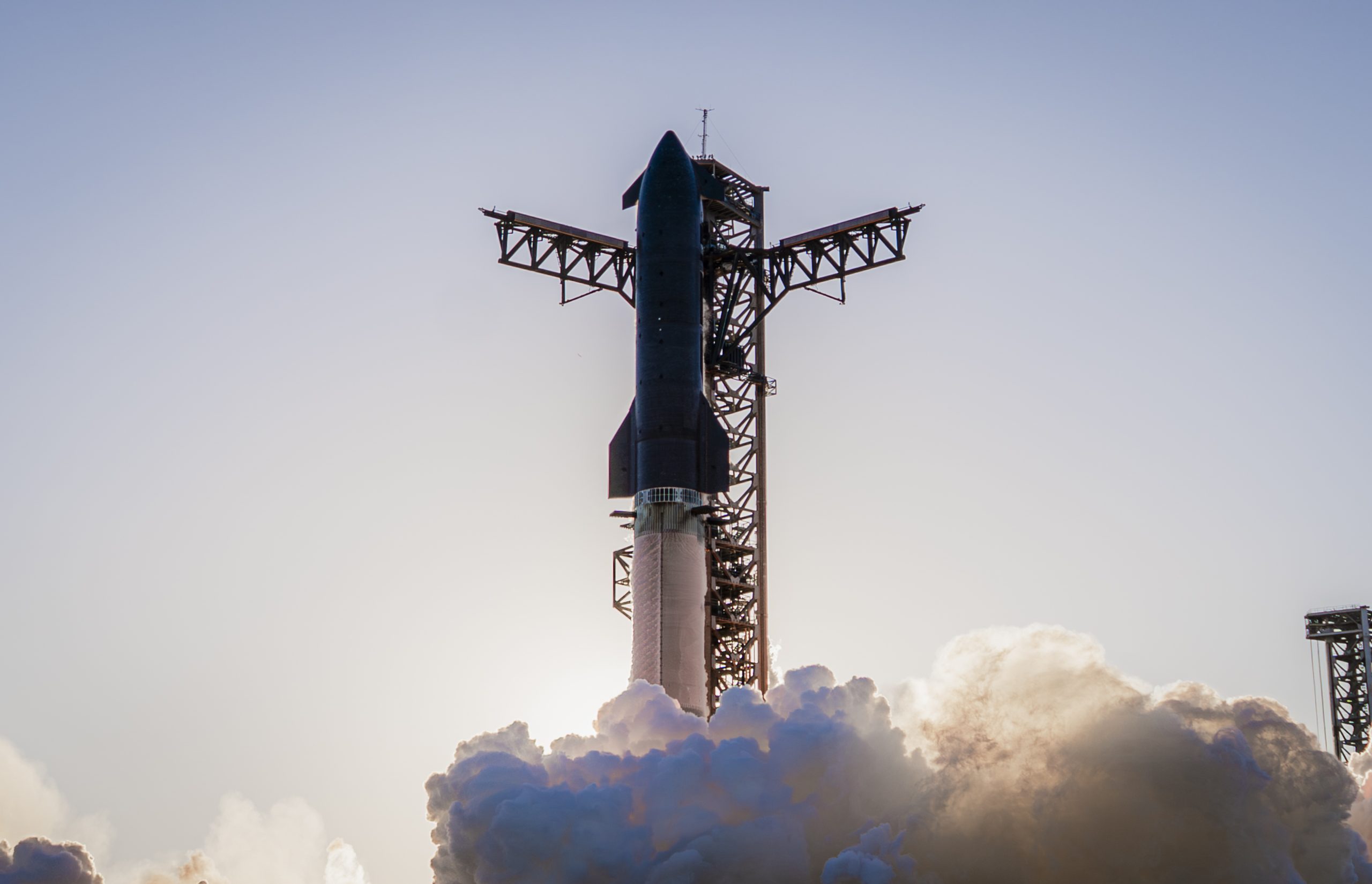
SpaceX is reportedly mulling an initial public offering, eyeing what would be the largest valuation at the time of availability of all time, a new report from Bloomberg said on Tuesday.
It is one of many reports involving one of Elon Musk’s companies and a massive market move, as this is not the first time we have seen reports of an IPO by SpaceX. Musk himself has also dispelled other reports in the past of a similar nature, including an xAI funding round.
SpaceX and Musk have yet to comment on the report. In the past, untrue reports were promptly replied to by the CEO; this has not yet gained any response, which is a good sign in terms of credibility.
However, he said just a few days ago that stories of this nature are inaccurate:
“There has been a lot of press claiming SpaceX is raising money at $800B, which is not accurate. SpaceX has been cash flow positive for many years and does periodic stock buybacks twice a year to provide liquidity for employees and investors. Valuation increments are a function of progress with Starship and Starlink and securing global direct-to-cell spectrum that greatly increases our addressable market. And one other thing that is arguably most significant by far.”
There has been a lot of press claiming @SpaceX is raising money at $800B, which is not accurate.
SpaceX has been cash flow positive for many years and does periodic stock buybacks twice a year to provide liquidity for employees and investors.
Valuation increments are a…
— Elon Musk (@elonmusk) December 6, 2025
Musk has discussed a potential IPO for SpaceX in recent months, as the November 6 shareholder meeting, as he commented on the “downsides” of having a public company, like litigation exposure, quarterly reporting pressures, and other inconveniences.
Nevertheless, Musk has also said he wants there to be a way for Tesla shareholders to get in on the action. At the meeting in early November, he said:
“I do want to try to figure out some way for Tesla shareholders to participate in SpaceX. I’ve been giving a lot of thought to how to give people access to SpaceX stock.”
Additionally, he added:
“Maybe at some point., SpaceX should become a public company despite all the downsides of being public.”
Musk has been historically reluctant to take SpaceX public, at times stating it could become a barrier to colonizing Mars. That does not mean it will not happen.
Bloomberg’s report cites multiple unidentified sources who are familiar with the matter. They indicate to the publication that SpaceX wants to go public in mid-to-late 2026, and it wants to raise $30 billion at a valuation of around $1.5 trillion.
This is not the first time SpaceX has discussed an IPO; we reported on it nine years ago. We hope it is true, as the community has spoken for a long time about having access to SpaceX stock. Legendary investor Ron Baron is one of the lucky few to be a SpaceX investor, and said it, along with Tesla, is a “lifetime investment.”
Tesla bull Ron Baron reveals $100M SpaceX investment, sees 3-5x return on TSLA
The primary driver of SpaceX’s value is Starlink, the company’s satellite internet service. Starlink contributes 60-70 percent of SpaceX’s revenue, meaning it is the primary value engine. Launch services, like Falcon 9 contracts, and the development of Starship, also play supporting roles.
News
SpaceX reaches incredible milestone with Starlink program

SpaceX reached an incredible milestone with its Starlink program with a launch last night, as the 3,000th satellite of the year was launched into low Earth orbit.
On Monday, SpaceX also achieved its 32nd flight with a single Falcon 9 rocket from NASA’s Kennedy Space Center.
The mission was Starlink 6-92, and it utilized the Falcon 9 B1067 for the 32nd time this year, the most-used Falcon booster. The flight delivered SpaceX’s 3000th Starlink satellite of the year, a massive achievement.
There were 29 Starlink satellites launched and deployed into LEO during this particular mission:
Falcon 9 launches 29 @Starlink satellites from Florida pic.twitter.com/utKrXjHzPN
— SpaceX (@SpaceX) December 9, 2025
SpaceX has a current goal of certifying its Falcon boosters for 40 missions apiece, according to Spaceflight Now.
The flight was the 350th orbital launch from the nearby SLC-40, and the 3,000 satellites that have been successfully launched this year continue to contribute to the company’s goal of having 12,000 satellites contributing to global internet coverage.
There are over five million users of Starlink, the latest data shows.
Following the launch and stage separation, the Falcon 9 booster completed its mission with a perfect landing on the ‘Just Read the Instructions’ droneship.
The mission was the 575th overall Falcon 9 launch, highlighting SpaceX’s operational tempo, which continues to be accelerated. The company averages two missions per week, and underscores CEO Elon Musk’s vision of a multi-planetary future, where reliable connectivity is crucial for remote work, education, and emergency response.
As Starlink expands and works toward that elusive and crucial 12,000 satellite goal, missions like 6-92 pave the way for innovations in telecommunications and enable more internet access to people across the globe.
With regulatory approvals in over 100 countries and millions of current subscribers, SpaceX continues to democratize space, proving that reusability is not just feasible, but it’s also revolutionary.

